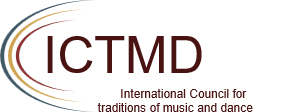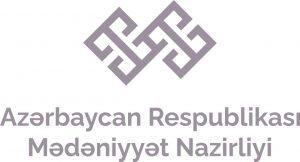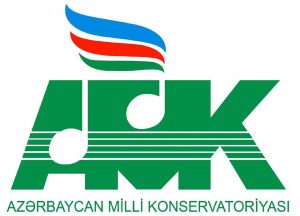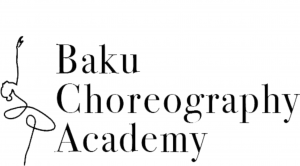ICTMD Baku 2024
CALL FOR PROPOSALS The Joint Symposium of the ICTMD Study Groups on Music and Dance in the Turkic World and Global History of Music Echoes of Heritage: Navigating the Legacy of Music and Dance 17-22 September 2024, Baku, Azerbaijan Download The ICTMD Study Groups on Music and Dance in the Turkic World and Global History of Music are excited to announce a joint symposium. Co-organized with the Azerbaijan National Conservatory and with the support of the Azerbaijan Ministry of Culture and the Turkic Culture and Heritage Foundation, the symposium will be held in Baku between the 18th and 22nd of September, 2024. Azerbaijan National Conservatory was established as a higher education institution in 2000 by the decree of the President of Azerbaijan to preserve and develop traditional musical art. Today it has two faculties and ten departments, including folk instruments, vocal mugham (khanende), instrumental mugham, ethnomusicology, and others. https://conservatory.edu.az/ The Symposium will be held in the framework of the annual Uzeyir Hajibeyli International Music Festival. At the joint symposium, we will offer several interrelated topics: We invite presentations that develop new and innovative approaches to the study of traditional cultures. The deadline for applications is May 20, 2024, 24:00 (GMT +3). CONCERTS, WORKSHOPS, AND VIDEO DEMONSTRATIONS Our Joint Symposium will provide an opportunity for dialogue between scholars and music and dance practitioners involved in performance, research, and teaching. Presentations and discussions (round tables) will alternate with concerts, workshops, and video demonstrations. The Program Committee encourages scholars and artists to propose not only papers but also panels, workshops, concerts, and presentations of books, records, and films. To propose a presentation, please send abstracts of up to 250 – 300 words in English, 7 – 10 keywords, and identify yourself (name, surname, academic degree, title, job position, e-mail). All proposals must be submitted via email to ictmdbaku2024@conservatory.edu.az Our selection criteria for your submitted abstract follow a strong consideration of purpose, relevance, and novelty. It is planned to publish selected papers in the journal AEMR and the proceedings. Languages for 20-minute presentation: English, Azerbaijani, Turkish, Russian. Presentation in other than English language must be provided with full and identical English subtitles and/or slides. The symposium will be held in both on-site and online format. Prerecorded presentations are welcome. The registration fee is 35 € for on-site participants and 25 € for online participants; 20 € for on-site and free for online postgraduate students. The registration fee includes program and abstract booklets, coffee breaks, a concert program by traditional performers of the Turkic World between September 18 – 22, and master classes.
Baku is the capital city of the Republic of Azerbaijan, as well as the largest city on the Caspian Sea and in the Caucasus region and industrial centre. Ancient foundations, a large area and a population all make Baku one of the oldest and largest cities in the East. Baku is 28 metres (92 ft) below sea level, which makes it the lowest lying national capital in the world and also the largest city in the world below sea level. Baku lies on the southern shore of the Absheron Peninsula, on the Bay of Baku. Baku’s urban population was estimated at two million people as of 2009. Baku is the primate city of Azerbaijan it is the sole metropolis in the country, and about 25% of all inhabitants of the country live in Baku’s metropolitan area. Baku is situated on the western coast of the Caspian Sea. In the vicinity of the city there are a number of mud volcanoes (Keyraki, Bogkh-bogkha, Lokbatan and others) and salt lakes (Boyukshor, Khodasan, etc.). Baku has a cold semi-arid climate with hot and humid summers, cool and occasionally wet winters, and strong winds all year long. This is largely because of its northerly latitude and the fact that it is located on a peninsula on the shore of the Caspian Sea. At the same time Baku is noted as a very windy city throughout the year, hence the city’s nickname the «City of Winds», and gale-force winds, the cold northern wind khazri and the warm southern wind gilavar are typical here in all seasons. Traces of human settlement in the region of present-day Baku date back to the Stone Age. In the 1st century AD, the Romans organised two Caucasian campaigns and reached what is today Baku. Near the city, in what is today Gobustan, Roman inscriptions dating from AD 84 to 96 survive – some of the earliest written evidences for a city there. Baku’s largest industry is petroleum, and its petroleum exports make it a large contributor to Azerbaijan’s balance of payments. The existence of petroleum has been known since the 8th century. In the 10th century, the Arabian traveler, Marudee, reported that both white and black oil were being extracted naturally from Baku. Commercial exploitation began in 1872, and by the beginning of the 20th century the Baku oil fields were the largest in the world. Baku ranked as one of the largest centres for the production of oil industry equipment before World War II. Fifty years before the battle, Baku produced half of the world’s oil supply. The core of present-day Baku is the old town, or fortress, of Icheri-Sheher. Most of the walls, strengthened after the Russian conquest in 1806, survive, as does the 90-foot (27-metre) tower of “Qız qalası” (Maiden’s Tower, 12th century). The old town is highly picturesque, with its maze of narrow alleys and ancient buildings. These include the Palace of the Shirvan-Shahs (now a museum), the oldest part of which dates from the 11th century. The walled city, along with the Palace of the Shirvan-Shahs and Maiden’s Tower were collectively designated a UNESCO World Heritage site in 2000. Around the walls of the fortress, the regular streets and imposing buildings of modern Baku rise up the slopes of the amphitheatre of hills surrounding the bay. Along the waterfront an attractive park has been laid out. Most industrial plants are located at the eastern and southwestern ends of the city. Greater Baku, divided into 11 districts, encompasses almost the entire Absheron Peninsula as well as islands off the tip of the peninsula and another built on stilts in the Caspian Sea, 60 miles (100 km) from Baku. Baku is one of the most important tourist destinations in the Caucasus. Many sizable world hotel chains have a presence in the city. Baku has many popular tourist and entertainment spots, such as the downtown Fountains Square, the One and Thousand Nights Beach, Shikhov Beach and Oil Rocks. Baku’s vicinities feature Yanar Dag, an ever-blazing spot of natural gas. On 2 September 2010 with the inauguration of National Flag Square, Baku set the world record for tallest flagpole on 24 May 2011. The city is the scientific, cultural, and industrial centre of Azerbaijan. Many sizeable Azerbaijani institutions have their headquarters there. In the 2010s, Baku became a venue for major international events. It hosted the 57th Eurovision Song Contest in 2012, the 2015 European Games, 4th Islamic Solidarity Games, the European Grand Prix in 2016, the Azerbaijan Grand Prix since 2017, the final of the 2018–19 UEFA Europa League, and was one of the host cities for UEFA Euro 2020. The Baku International Sea Trade Port is capable of handling two million tonnes of general and dry bulk cargoes per year. Baku is renowned for its harsh winds, reflected in its nickname, the «City of Winds». In 2007 the Heydar Aliyev Cultural Centre, designed by Pritzker Prize-winning architect Zaha Hadid, was opened. Baku also has many museums such as Baku Museum of Modern Art and Azerbaijan State Museum of History, most notably featuring historical artifacts and art. Many of the city’s cultural sites were celebrated in 2009 when Baku was designated an Islamic Culture Capital. Baku was chosen to host the Eurovision Dance Contest 2010. It has also become the first city hosting the first European Games in 2015. Among Baku’s cultural venues are Azerbaijan State Philharmonic Hall, Azerbaijan State Academic Opera and Ballet Theatre. The main movie theatre is Azerbaijan Cinema. Festivals include Baku International Film Festival, Baku International Jazz Festival, Novruz Festival and the National Theater Festival. International and local exhibitions are presented at the Baku Expo Centre.
INFORMATION ON ACCOMMODATION: The symposium is scheduled to take place in Baku, Azerbaijan. We advise that you schedule your arrival for no earlier than September 17, due to expected traffic restrictions throughout the city related to the Formula Grand Prix event. The official opening and welcome events for the symposium are set to begin on September 18th. Venue: Azerbaijan National Conservatory, Alekperov Yasamal District 7, Baku, 1073 Miraj Hotel Baku — 60 manat / 33 euro https://mirajhotel.az/en/ Grand Hotel Baku — 100 manat / 54 euro https://bakugrandhotel.az/ Mercure Hotel Baku — 120 manat / 65 euro https://all.accor.com/hotel/C0F2/index.ru.shtml Contact details of local organizers: Fidan Agayeva – Inspector of the Department of International Relations of the ANC, agayeva.fidan93@gmail.com tel. +994 55 576 23 05 Günay Babazade – ANC research laboratory staff, babazadehgunay@yahoo.com tel. +994 50 366 31 10 Fardin Makhammzade – Head of the ANC Student Scientific Society, fardinmahammadzada@gmail.com tel. +994 50 613 66 11 For more information, please follow the ICTMD web page https://ictmusic.org/ and get in touch with the secretaries of our Study Groups: Valeriya Nedlina: leranedlin@gmail.com Anna Oldfield: aoldfield@coastal.edu Kanykei Mukhtarova: mukhtaro@ualberta.ca We are looking forward to seeing you in Azerbaijan in 2024! Abdullah Akat and Razia Sultanova Chairs of the ICTMD Study Groups on Music and Dance in the Turkic World and Global History of Music COMMITTEES Planning Committee Abdullah Akat, Prof. Dr., Istanbul University State Conservatory (Türkiye) Sanubar Baghirova, Prof. Dr., National Academy of Sciences (Azerbaijan) Lala Huseynova, Prof. Dr., Azerbaijan National Conservatory (Azerbaijan) Razia Sultanova, Prof. Dr., University of Cambridge (United Kingdom) Program Committee Sanubar Baghirova, Prof. Dr., National Academy of Sciences (Azerbaijan) – Chair Kamila Dadashzade, Prof. Dr., University of Art and Culture (Azerbaijan) Gisa Jähnichen, Prof. Dr., Shanghai Conservatory of Music & Vienna University (China & Austria) Rezeda Khurmatullina, Assoc. Prof. Dr., Kazan Federal University (Tatarstan, Russia) Valeriya Nedlina, Assoc. Prof. Dr., Kazakh National Conservatory (Kazakhstan) Anna Oldfield, Prof. Dr., Coastal Carolina University (United States) Giultekin Shamilli, Dr. Sc. in Art History, State Institute for Art Studies (Russia & Azerbaijan) Galina Sychenko, Assoc. Prof. Dr., Archive of Eurasia (Italy) Local Organizing Committee Jahangir Salimkhanov, Advisor to Minister of Culture of the Republic of Azerbaijan – Honorary Member Siyavush Karimi, Rector of the Azerbaijan National Conservatory Naila Mammadzade, Rector of the Baku Choreographic Academy Lala Huseynova, Vice-Rector of the Azerbaijan National Conservatory – Chair Habiba Mamedova, Vice-Rector of the Baku Choreographic Academy Aygul Ahmadova, Head of the Department of International Relations ANC Fidan Aghayeva, Inspector of the International Department of the ANC Gulnara Manafova, Senior Researcher at ANC Rena Fakhradova, Researcher at ANC Research Laboratory Humay Farajova-Jabbarova, Researcher at ANC Research Laboratory
EXPLANATION OF THE TOPICS Prominent Individuals in the History of Music and Dance Heritage Studying the history of music and dance heritage through the prism of outstanding individuals reveals the special role of subjectivity in the study of culture. Researchers form systems to select and evaluate important individuals in ever-changing societies. Forgotten names as well as famous individuals have become facts of history, signaling not only scholars but also the values of the societies in which they are located. Studies of the lives and creativity of both well-known and little-known names in the context of contemporary scholarly paradigms can expand our understanding of deep patterns in the functioning of music and dance from a historical perspective. One of the most striking figures in the history of music heritage is Uzeyir Hajibeyli (Hajibekov, 1885 – 1948), who created an entirely new cultural paradigm for Azerbaijani music. Hajibeyli’s life and work, which took place during immense changes to the socio-political, ideological, and cultural structure of society, still need to be studied in depth, especially considering material and archival documents in the context of new approaches to historical musicology. While considering outstanding individuals, questions of subjectivity become important: What are the mechanisms for selecting and evaluating historical “facts” in the context of cultural, social, and political preferences that influence the global history of music? What criteria are used by researchers in the system of assessment of an individual’s heritage? The main directions proposed for discussion are: The Musical Heritage of Shusha in Context of the Dialogue of Cultures Shusha (formerly Panahabad, 1752), an epicenter of the musical life of the South Caucasus, has played a significant role in the formation of regional cultural heritage. The creative resources of the capital of the Karabakh Khanate have been a source from which musicians of the Caucasus have been drawing inspiration for centuries. These resources included a huge pool of highly professional musicians, versatile musical knowledge, new musical, stage, and concert forms that debuted in Shusha and spread throughout the Caucasus, and the tar playing of Mirza Sadiq Asad oglu (Sadıqcan tarı), which became important to the performance practices of the entire region. Many melodies composed by Shusha musicians have entered the repertoire of Caucasian performers of traditional music: these include popular urban songs, mugams, tesnifs, Ashig songs, and dance melodies performed on instruments such as tar, kamancha, gaval, saz, balaban, gosha—nagara, which constituted traditional musical ensembles and, at the beginning of the twentieth century, were integrated into operas and operettas by Uzeyir Hajibeyli (Hajibekov). Today, diverse ethnic and national groups of the South Caucasus perceive this heritage as their own, local cultural traditions. Over the past century, the musical dynasties of Shusha have consistently incorporated the convergence of the East and West into various forms of musical creativity. All such topics above, as well as new or little-known sources about the activities of Shusha musicians or their creative collaborations with Caucasian, Iranian, and Turkish musicians, are of interest both in the context of dialogues between the cultures of the Caucasus and the cultures of East and West. The main directions proposed for discussion are: Legacy, Preservation, and Change of Music and Dance Traditions Studying music and dance in a globalizing world, we discover the uniqueness of diverse cultural phenomena. The challenges of studying the mechanisms of transmission and preservation of artistic experience in systems of traditional and academic education actualize issues of loss, assimilation, and transformation of traditional heritage. The phenomenon of the singing voice has particular importance because it carries specific physiological features, timbre, and techniques of sound production, polished for centuries in traditional musical education. Modern artistic realities demonstrate numerous examples of the recontextualization of music and dance samples as a process of extracting texts from original contexts, followed by their interpretation in various musical discourses. The main directions proposed for discussion are: Music Therapy: Problems and Prospects in the 21st Century The humanities of East and West have been studying the therapeutic effect of music on the human body since ancient times. However, despite the fact that music therapy has a centuries-old history, its scientific understanding and practical application have never been linear, rather sporadic. Closer attention to this field of knowledge since the middle of the XIX century has not resulted in the systematic and widespread introduction of the discipline into the education and practice of medicine. Meanwhile, music therapy has proven results in treating post-traumatic disorders caused by natural and military disasters, as well as positive impacts on an individual’s socio-psychological adaptation. Despite the inclusion of Music Therapy in fields such as psychology, philosophy of consciousness, and the science of the human brain, new technologies such as positron emission tomography (PET) and functional magnetic resonance imaging (fMRI) have not been applied to the therapeutic effects of ethnically oriented traditional music. Does the aesthetic pleasure and, consequently, the therapeutic effect of music have a culturally conditioned character? Positive effects of music on various body functions, including the «Mozart effect», do not have the presumption of universality. Questions of Music Therapy in traditional music require the development of ethnic cognitivism (or cognitive science), involving the study of language and music on the material of ethnic cultures. The main directions proposed for discussion are:
Contact details of local organizers: Fidan Agayeva – Inspector of the Department of International Relations of the ANC, agayeva.fidan93@gmail.com tel. +994 55 576 23 05 Günay Babazade – ANC research laboratory staff, babazadehgunay@yahoo.com tel. +994 50 366 31 10 Fardin Makhammzade – Head of the ANC Student Scientific Society, fardinmahammadzada@gmail.com tel. +994 50 613 66 11 For more information, please follow the ICTMD web page https://ictmusic.org/ and get in touch with the secretaries of our Study Groups: Valeriya Nedlina: leranedlin@gmail.com Anna Oldfield: aoldfield@coastal.edu Kanykei Mukhtarova: mukhtaro@ualberta.ca We are looking forward to seeing you in Azerbaijan in 2024! Abdullah Akat and Razia Sultanova Chairs of the ICTMD Study Groups on Music and Dance in the Turkic World and Global History of Music




